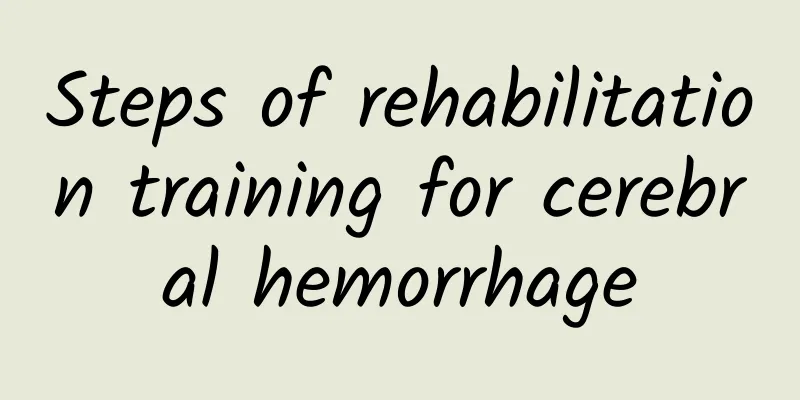Steps of rehabilitation training for cerebral hemorrhage

|
After good treatment, the condition of patients with cerebral hemorrhage will gradually stabilize. At this time, patients will more or less have some sequelae, such as hemiplegia, aphasia and other symptoms. At this time, rehabilitation training should be carried out in time. According to the patient's condition, they should first be trained in bed. If they can walk on the ground, they should conduct walking training to gradually recover their body step by step. Steps of rehabilitation training for cerebral hemorrhage 1. Exercise on the bed: It includes turning over and moving the body up and down, left and right, exercises for the back muscles, abdominal muscles and respiratory muscles, upper and lower limb activities, as well as exercises for daily life activities such as washing, dressing, eating, and using the toilet. 2. Walking exercises: Walking is an important part of self-care for hemiplegic patients. First perform warm-up exercises before walking (such as swinging the affected limb back and forth in a supported standing position, stepping, bearing weight, etc.), then walk with support or between parallel bars, walk with crutches, or walk without hands. Emphasis should be placed on walking exercises, and attention must be paid to improving gait exercises. 3. Standing and standing balance exercises: First do preparatory exercises for standing (such as sitting and stepping with legs raised, muscle strength exercises for the affected lower limb, etc., and if conditions permit, use a standing bed for exercises), and then stand with support, stand between balance bars, stand with bare hands, and perform standing balance exercises to achieve the ability to maintain standing balance under a certain external force from others. 4. Sit-up and sitting balance exercises: Start with a semi-sitting position (30-40 degree angle) and gradually increase the angle, frequency and time, from sitting on the bed, sitting beside the bed, sitting in a chair or wheelchair. Because the patient cannot control himself when sitting and often leans to the affected side, he should then practice sitting balance, from being unable to sit steadily without support to being able to sit steadily by swinging the trunk in different directions and being able to sit steadily with a certain external force from others. The main methods used are massage, passive exercise assisted by others, and active exercise participated in by the patients themselves. Although medical staff advocate that rehabilitation exercises should be started as early as possible, patients and their families often still have concerns about early exercise, especially patients with cerebral hemorrhage, who are even more worried that early activities will cause rebleeding. In fact, the chance of rebleeding caused by rehabilitation exercises is very small. Medical staff concluded that as long as patients with cerebral hemorrhage undergo rehabilitation exercises and their blood pressure remains stable and their movements are not too strenuous, they will not suffer from rebleeding. However, if rehabilitation exercises are started too late, they will lose the effect of preventing sequelae and complications. |
<<: What to do if intracranial hemorrhage causes high intracranial pressure
>>: What is the blood pressure control range for cerebral hemorrhage?
Recommend
Is prickly heat contagious?
Prickly heat is a common skin disease among frien...
The efficacy of Huating five-clawed wild vegetable
Five-claw wild vegetable is a kind of natural her...
Should I fill my broken deciduous teeth?
Before a child's teeth change, they are decid...
Symptoms of excessive liver fire
Excessive liver fire is what we call it in tradit...
What is the normal value of estradiol e2
Estradiol E2 is a hormone secreted by the ovarian...
What are the symptoms of premarital anxiety?
Pre-marital anxiety is mainly about the worry and...
A small thing can make men and women feel excited at the same time
I believe everyone should have had this experienc...
What are the benefits of boiling loquat leaves in water?
Loquat is a common fruit in daily life. Loquat no...
Men's constipation should not be solved by laxatives, this is the magic weapon to cure constipation
The problem of constipation has filled the lives ...
What causes dizziness, vomiting and diarrhea?
I believe many people have experienced dizziness,...
What to do if you have eczema on the inside of your legs
Eczema on the inner sides of the legs is quite co...
What can I eat to cure mild nitrite poisoning?
Many of the vegetables we usually eat contain nit...
When is the safe period for menstruation?
The female cycle is composed of several parts, in...
Which anti-inflammatory medicine is good for babies?
For babies, some anti-inflammatory drugs may be n...
What should I do if my second molar falls out?
When the second molar is missing, there are many ...









